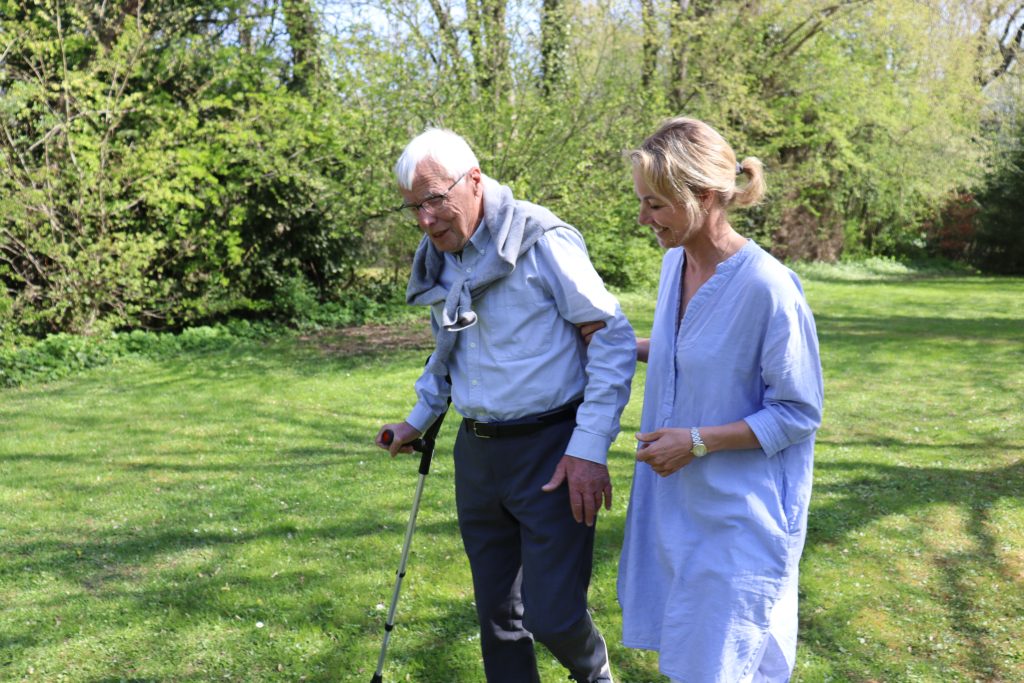Parkinson’s disease is a chronic disease that slowly progresses over time. The patient slowly loses more and more nerve cells in the brain that contain the neurotransmitter dopamine. The disease is usually characterized by tremors, stiffness of the muscles and slow movements.
Parkinson’s disease is a debilitating disease that occurs in about one percent of the population over the age of 50. However, the incidence of Parkinson’s disease is most common in people over 70 years of age, and the disease is equally common in men and women. In this article, we will take a closer look at the disease
What is Parkinson's disease?
Parkinson’s disease develops due to the gradual and slow destruction of brain cells in the substantia nigra. The substantia nigra is a small and defined area located deep in the brain. This destruction particularly affects the cells that secrete dopamine. This results in a lack of dopamine, causing sluggish and slow movements, stiffness in the arms and legs, and tremors at rest. This tremor particularly affects the hands, which can have a major impact on the patient’s daily life.
Often, symptoms first appear in one half of the body and then spread to the other half. Parkinson’s disease usually starts with tremors, which slowly leads to reduced movement and stiffness of the muscles. Over time, the disease often affects balance as well.
Over time, all movements will slow down, and for many patients, walking, for example, becomes increasingly difficult. Many people with Parkinson’s disease begin by walking with a more hunched body and a shuffling gait, with arms swinging and balance uncertain. In addition, tremor in Parkinson’s disease is exacerbated by psychological stress.
For many people with Parkinson’s disease, over time, the voice and speech will also become weaker and more monotonous, and the face becomes less expressive and may appear expressionless.
In addition, there are psychological symptoms associated with Parkinson’s disease, such as depression, passivity, forgetfulness and sleep problems. Some people also experience pain in large joints, uncomfortable sweating, constipation, and difficulty with bowel movements and urination.
How is Parkinson's disease diagnosed?
There are a number of factors that are looked at when diagnosing the disease.
- Tremors will be a strong indicator of the disease. The tremors usually occur at a rate of 4-6 times per second and are most pronounced at rest
- Reduced movements, a decrease in stride length and facial expressions
- Muscle stiffness, most evident in the hands and arms
- Over time, there will often be problems with balance and a tendency to fall
In the beginning, the symptoms of the disease will often come and go, and therefore in many cases it is difficult to diagnose when symptoms first appear. However, as the disease progresses, it will be possible for the doctor to make the diagnosis. In some cases, additional tests may be needed to rule out other diseases that may have similar symptoms to Parkinson’s disease.
Causes of Parkinson's disease
Unfortunately, the causes of Parkinson’s disease are unknown in the majority of cases. However, heredity is thought to play a role in the development of the disease. In fact, it is estimated that 10-15% of people with Parkinson’s disease have inherited the disease.
For some patients, the disease is caused by viral infections of the brain. In addition, many different types of poisoning have been shown to lead to the development of Parkinson’s disease. Also, neuroleptic drugs used to treat mental illnesses can cause symptoms of Parkinson’s disease.
Treatment of Parkinson's disease
Unfortunately, there is no cure for Parkinson’s disease. However, there are medicines that can slow the progression of the disease and relieve symptoms. Treatment with medication begins when the symptoms of the disease start to limit the patient’s function and quality of life. The medication aims to increase the neurotransmitter dopamine in the substantia nigra, which is affected in Parkinson’s disease.
Currently, there are several different types of medication available to treat Parkinson’s disease. The choice of medicine depends on symptoms and age, as different medicines work slightly differently and have different side effects.
If medication does not produce the desired effect, surgery with implantation of electrodes deep in the brain may be an option. However, this is only for particularly debilitating Parkinson’s where medication is no longer effective. For patients with Parkinson’s disease, staying physically active is also important, and many also benefit from physiotherapy.
Read more about how to choose the right nursing care agency for Parkinson’s disease care. Also see an overview of prices and subsidies.
Parkinson's care at home
It is possible to receive Parkinson’s care at home. Search for a private nurse who can help you set up a care framework and provide you with professional nursing care and the necessary care and attention that can help improve the quality of life in Parkinson’s disease.
In addition to providing the necessary care, a private nurse can also relieve the burden on relatives by handling practical tasks. This allows relatives to spend more time with their loved ones. No matter what stage of Parkinson’s a patient is in, a private nurse should have a strong focus on care and palliation, and should be attentive to the patient’s and family’s wishes.
This allows care to be adapted to the needs of the individual patient and his or her relatives.



